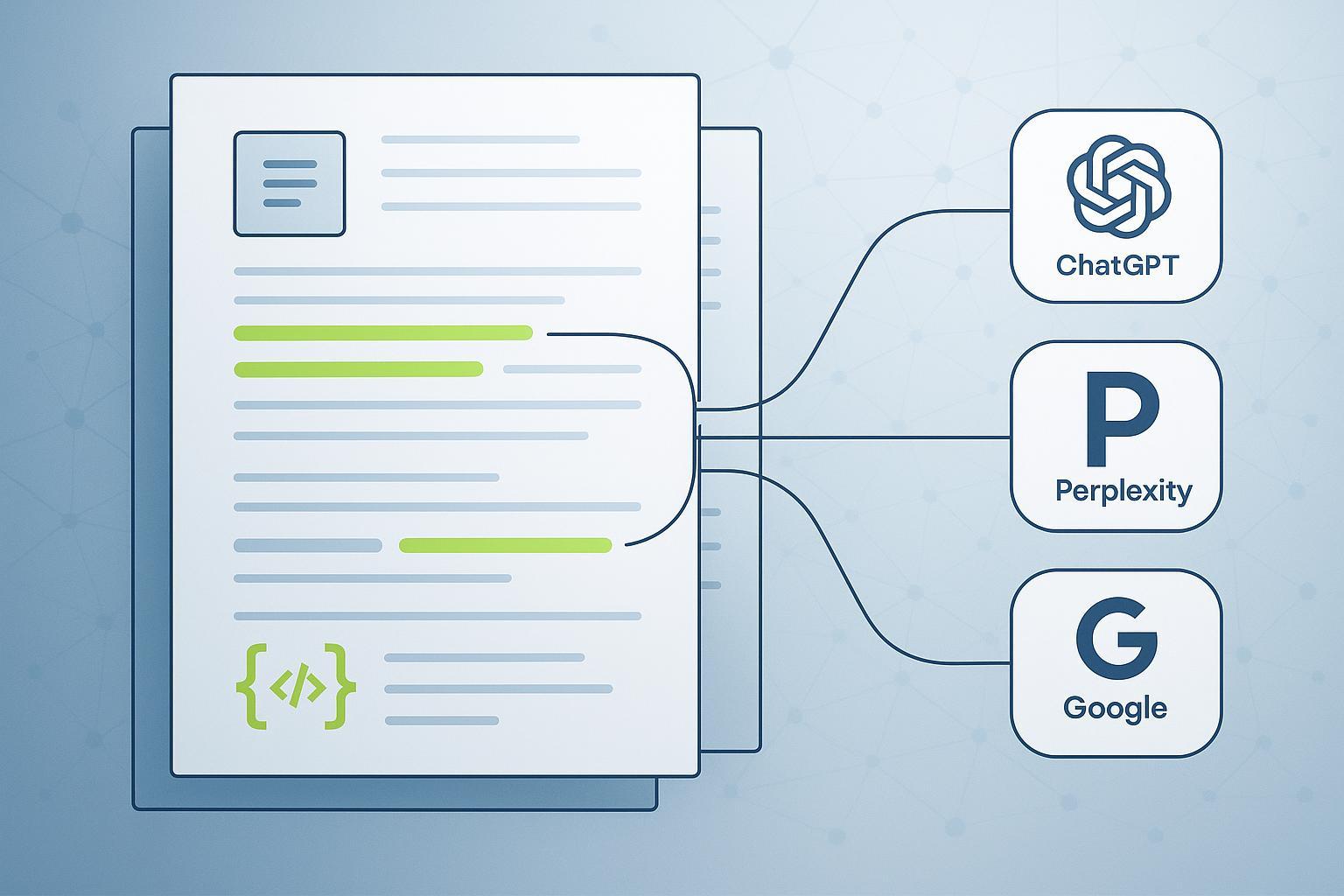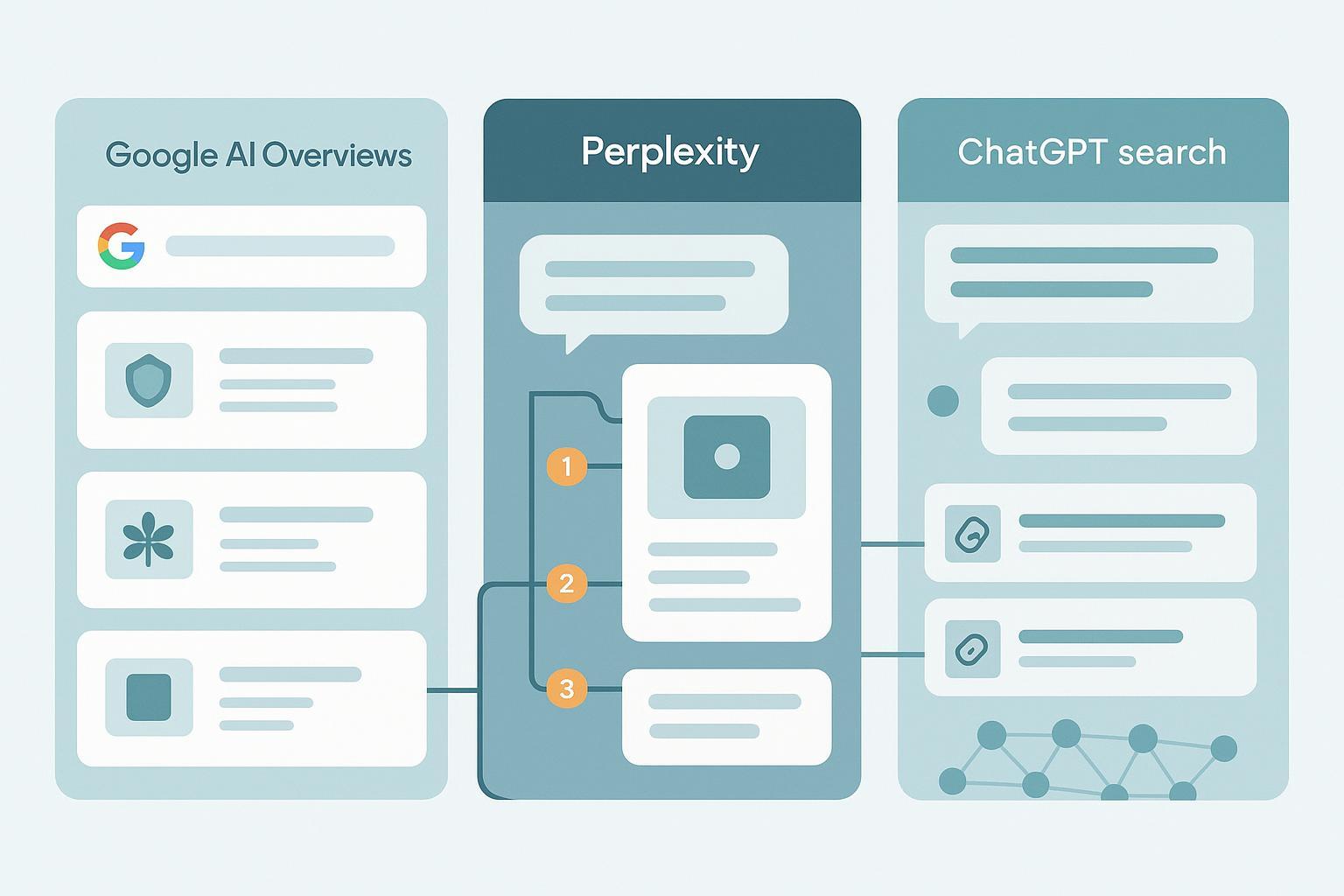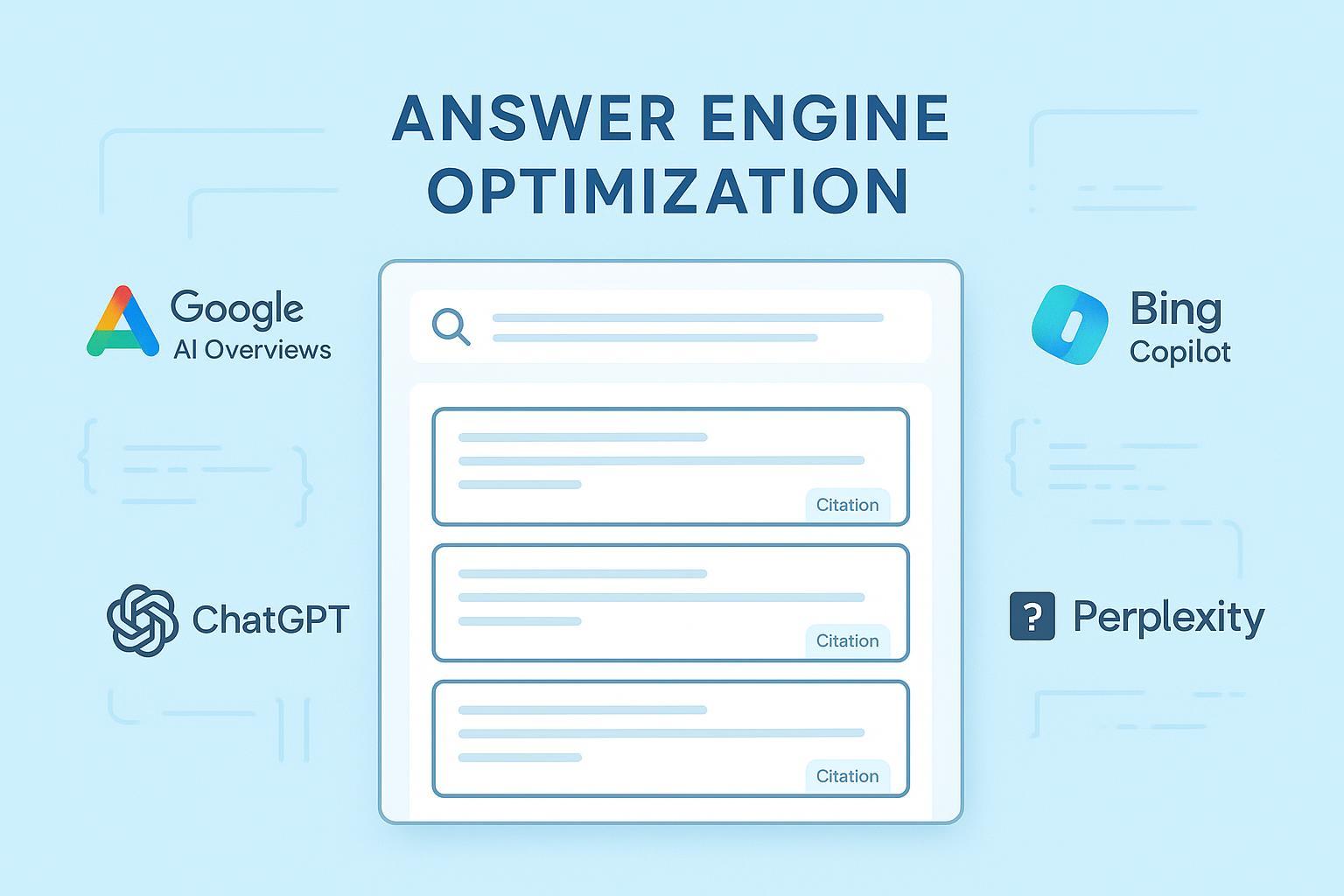Best Practices: Optimize Product Docs for AI Search & User Queries
Discover actionable strategies to align product documentation with user questions for better AI search visibility and citations. Includes schema markup, modular content, and workflow with Geneo for brand management and digital marketing pros.


If your manuals and docs are still written only for human readers and classic SEO, you’re leaving citations and traffic on the table. In 2025, AI search systems (ChatGPT, Perplexity, Google’s AI experiences) extract, synthesize, and quote content that is scannable, authoritative, and structurally explicit. This playbook distills proven practices we’ve used to make product documentation show up—and be cited—by AI engines.
Key idea: Treat every page as a potential answer atomic unit. Make it easy for AI to map user questions to precise, verifiable passages and validated metadata.
1) What’s different about AI search—and what isn’t
- Google’s AI experiences (AI Overviews/AI Mode) don’t require special tags for eligibility. Your page must be indexable and snippet-eligible; helpful, reliable content and accurate structured data still matter. Google states in 2025 that “there are no additional technical requirements” beyond standard indexing/snippet eligibility, as documented in the official guidance on AI features eligibility (Google, 2025).
- AI systems prefer pages that answer discrete tasks/questions, citeable with clear headings and self-contained steps—an extension of good UX writing. This mirrors principles advocated by NN/g in 2024–2025 around modular content and concise summaries, e.g., prepare for AI (Nielsen Norman Group, 2024–2025).
- Perplexity’s product direction in 2025 emphasizes explicit citations and premium source integrations; its Deep Research feature performs multi-step investigations with clear citations, favoring fresh, authoritative sources, per Perplexity Deep Research launch (2025) and premium data integrations update (Perplexity, 2025).
- ChatGPT (GPT-4o/5) can browse and surface clickable citations when using external content; OpenAI’s 2025 notes confirm browsing/connector behavior, see ChatGPT release notes (OpenAI, 2025) and Connectors in ChatGPT (OpenAI, 2025).
Implication: You don’t need an AI-only SEO playbook—you need documentation that is modular, verifiable, and mapped to user questions, with accurate structured data and strong trust signals.
2) Information architecture that AIs can extract cleanly
I’ve found that most “invisible” docs share the same issues: long, unstructured pages and vague headings. Fixing IA and writing patterns creates immediate lift for extractability and citations.
Practical patterns that work:
- One task per section (or page). Write each section to answer a single user intent (e.g., “Reset a device to factory settings”).
- Make headings meaningful. Avoid “Overview.” Prefer “Limitations of the Export API (v3.2).”
- Start each section with a two-sentence summary that answers the question first, then elaborates.
- Use numbered steps for procedures and bulleted lists for options/constraints.
- Include short FAQs under each procedure to capture adjacent questions (error codes, edge cases, versions).
- Keep paragraphs short (2–4 sentences) and self-contained to support passage extraction.
These practices align with research-backed UX principles for modular content and scannability highlighted by Nielsen Norman Group’s guidance on preparing for AI (2024–2025) and their patterns for promptframes and task scoping (NN/g, 2024–2025).
3) Schema markup playbook for documentation
Structured data won’t force inclusion in AI answers, but it increases machine clarity and supports rich results. Always ensure markup mirrors visible content and validates prior to release, per Intro to structured data (Google, 2025) and SD policies (Google, 2025).
Core types for product docs in 2025:
- FAQPage: For consolidated Q&A blocks (multiple related questions on one page). See FAQPage structured data (Google, 2025).
- QAPage: For a single main question with answers (community or official). See QAPage structured data (Google, 2025).
- HowTo: For task-based procedures with steps, times, and supplies/tools. See HowTo structured data (Google, 2025).
- Product: For product overview/spec pages, with name, images, offers, brand/SKU, and reviews where applicable. See Product structured data (Google, 2025).
Validate with the Rich Results Test (Google, 2025) before you ship.
Example: Minimal HowTo JSON-LD aligned to visible steps
{
"@context": "https://schema.org",
"@type": "HowTo",
"name": "Reset the Device to Factory Settings",
"description": "Restore the device to original settings. This clears user data and custom configurations.",
"totalTime": "PT5M",
"tool": [{ "@type": "HowToTool", "name": "Paper clip" }],
"step": [
{
"@type": "HowToStep",
"name": "Power off the device",
"text": "Hold the power button for 5 seconds until the LED turns off."
},
{
"@type": "HowToStep",
"name": "Press the reset pin",
"text": "Insert a paper clip into the reset port and hold for 10 seconds until the LED blinks blue."
},
{
"@type": "HowToStep",
"name": "Confirm reset",
"text": "Release the pin. The device restarts and displays the setup screen."
}
]
}
Tips from practice:
- Keep the HowTo steps and the visible steps in perfect sync. If a step changes, update both.
- Use HowToSection for longer procedures with subsections (e.g., per-OS steps).
- For FAQs, ensure the visible Q&A block appears on the page—not just in JSON-LD. See FAQPage rules (Google, 2025).
4) Align technical detail with how users ask questions
Bridging terminology is where teams win or lose. Engineers write “OAuth 2.0 client credential grant,” while users ask “How do I get an API token?” Your docs need both.
A workable process:
- Collect raw questions: Pull from support tickets, CRM case tags, community forums, on-site search logs, and sales call notes.
- Cluster intents weekly: Group by task (“reset,” “export,” “integrate”), by persona (admin vs. developer), and by product version.
- Map each cluster to an FAQ or task section: Create/expand a doc page when a cluster grows.
- Write dual-language headings: Add a secondary heading that mirrors user phrasing under the technical heading.
- Maintain a glossary that translates user phrasing to your technical terms.
AI search tie-in:
- Perplexity and ChatGPT often quote phrases that look like direct answers or definitions. Lead with a crisp summary, then the details.
- Keep answers time-stamped and versioned so AIs prefer the freshest, authoritative snippet.
Monitoring loop with Geneo:
- Use Geneo to see how often your brand and specific docs are cited in ChatGPT, Perplexity, and Google’s AI experiences, and track the sentiment of how your answer is summarized. Geneo’s platform is built for AI search visibility monitoring across engines, with features like real-time ranking tracking, sentiment analysis, and historical query tracking available at Geneo (2025).
- When Geneo surfaces that AIs are using third-party explanations instead of your page, inspect language gaps: Are your headings too technical? Is your answer buried below the fold? Adjust headings/FAQs and revalidate schema.
5) Publisher controls, crawlability, and experimental signals
- Robots.txt is still your baseline control. Keep it current, precise, and tested; many AI crawlers respect it. See overviews from Conductor Academy on robots.txt (2025) and bot-management primers like DataDome’s guide (2025).
- Cloudflare can prepend AI-specific directives via managed robots.txt features, helpful when you need fast, selective enforcement; details in Cloudflare’s managed robots.txt docs (2025).
- llms.txt and ai.txt are experimental. Some publishers provide a curated list of high-value pages for LLMs (llms.txt), and researchers have proposed ai.txt as an extended DSL for training/summarization controls; neither is a standard as of mid‑2025. See an explainer on llms.txt (Firebrand Marketing, 2025) and the ai.txt DSL preprint (arXiv, 2025).
Bottom line: Prioritize indexability, accurate sitemaps, and snippet eligibility. Use experimental files as a complement, not a dependency.
6) Deep linking and passage extraction
AI systems often cite a passage rather than a whole page. Help them land precisely and help users verify context.
- Structure for passage ranking: Self-contained paragraphs under clear H2/H3s improve findability of exact answers within longer pages—consistent with Google’s guidance on clear headings and crawlable links in its developer docs (see links should be crawlable (Google, 2025)).
- Text fragments (#:~:text=) are useful for UX deep links and may be used by browsers to highlight quoted text. They aren’t a ranking signal and shouldn’t replace clean URLs. For SPA sites, avoid fragment routing that hides content from crawlers; follow JavaScript SEO basics (Google, 2025) and canonicalization guidance in duplicate URL consolidation (Google, 2025).
7) Trust and transparency: E‑E‑A‑T signals built into docs
AI systems prefer sources that are clearly credible. Bake trust into documentation:
- Author bylines with role/credentials and a short bio.
- Expert review notation (e.g., “Security reviewed by Jane Lee, CISSP, Aug 2025”).
- Change logs with dates and versions.
- Support contacts and escalation paths.
- Link to related whitepapers/SLAs.
These map to Google’s helpful content and E‑E‑A‑T principles for 2024–2025; see creating helpful content (Google, 2025) and related Article structured data (Google, 2025). They improve user trust and make your docs more likely to be cited as authoritative context.
8) Release, recrawl, and monitor: a working cadence
Pre-release checks (same day):
- Validate all structured data in the Rich Results Test (Google, 2025).
- Confirm pages are crawlable/indexable, correct canonical, proper robots directives.
- Submit updated URLs via Search Console’s URL Inspection “Request indexing,” and update sitemaps, aligned with Google’s crawl/indexing guidance (2025).
First 2 weeks after release:
- QA in AI engines: ask real user questions in ChatGPT/Perplexity/Google to see if your doc appears as a citation. Note phrasing differences and missed intents.
- Use Geneo to log AI citations/mentions for the updated URLs and capture sentiment in synthesized answers; compare to your target messages. Geneo’s monitoring and historical tracking workflows support this continuous loop, as outlined on Geneo’s platform site (2025).
Ongoing cadence:
- Weekly: Review Geneo mention/ranking movements and sentiment deltas; open tickets for top 3 gaps.
- Monthly: Cluster new user questions (support/search logs), add/expand FAQs, and tune headings/summaries.
- Quarterly: Governance review—archive stale pages, refresh screenshots, verify schema, and publish consolidated change logs. Patterns for ownership and cadence are consistent with enterprise documentation governance practices such as Atlassian’s doc guidance (2025).
9) Pitfalls we see repeatedly (and how to avoid them)
- Buried answers: If the core answer is three screens down, AI may pick a competitor that states it upfront. Fix by leading with a two-sentence summary.
- Mismatched schema: Markup that doesn’t mirror visible content can get ignored or, worse, flagged. Keep schema and on-page text synced.
- One-page encyclopedias: Giant pages dilute intent. Split into task-focused units with cross-links.
- SPA SEO traps: Fragment routing or delayed rendering hides content from crawlers. Follow JavaScript SEO best practices (Google, 2025).
- Stale versioning: AI tools often prefer freshness. Maintain visible update dates and version numbers; retire or noindex obsolete versions.
- Missing author signals: Anonymous docs erode trust. Add bylines, bios, and expert review notes aligned with helpful content guidance (Google, 2025).
10) Quick-start implementation checklist
Foundation
- [ ] Ensure crawlability, indexability, correct canonicals, and clean internal links.
- [ ] Add author bylines, bios, expert review notes, and visible change logs.
- [ ] Write two-sentence summaries atop each major section.
Information Architecture & Writing
- [ ] One task/intent per section or page; meaningful H2/H3s.
- [ ] Numbered steps for procedures; bulleted lists for options/constraints.
- [ ] Add 3–5 FAQs under each task (error codes, versions, edge cases).
Structured Data
- [ ] Implement relevant types: FAQPage, HowTo, Product, QAPage.
- [ ] Validate with Rich Results Test; keep schema in sync with visible text.
Language Alignment
- [ ] Collect weekly user questions from support/search/community.
- [ ] Map clusters to pages; add user-phrased secondary headings.
Deep Links & UX
- [ ] Use clear section anchors and self-contained paragraphs.
- [ ] Avoid SPA fragment routing for primary content.
Governance & Monitoring
- [ ] Submit updated URLs in Search Console; update sitemaps.
- [ ] Use Geneo to track AI citations/mentions and sentiment across ChatGPT, Perplexity, and Google; compare before/after.
- [ ] Review weekly; ship at least one improvement per cycle.
11) Applying it with Geneo: a compact workflow
Here’s a loop we’ve used successfully for documentation teams:
- Establish a control set: Pick 10–20 high-intent doc pages (setup, pricing, limits, core APIs).
- Remediate structure: Add summaries, refine headings, break into task pages, append FAQs, and add/validate schema.
- Ship and request indexing: Submit sitemaps and URLs; validate in Rich Results.
- Monitor with Geneo: Track mentions/citations and sentiment across ChatGPT, Perplexity, and Google’s AI experiences; set alerts for negative sentiment or citation loss.
- Compare language: For missed citations, read AI answers; adjust your doc headings and summaries to match winning phrases while maintaining accuracy.
- Iterate monthly: Expand FAQs and tighten steps; deprecate outdated pages.
Geneo’s real-time ranking tracking, sentiment analysis, and historical query tracking provide the right telemetry to close the loop between documentation changes and AI search visibility. Explore capabilities and a free trial at Geneo.
12) What to expect—and what not to
- There’s no guaranteed “switch” for AI Overviews or ChatGPT citations. Google reiterates that eligibility aligns with core indexing and helpful content, not special AI flags, per AI features guidance (Google, 2025).
- You can, however, materially raise your odds: modularize tasks, lead with answers, keep schema accurate, strengthen trust signals, and monitor ruthlessly.
- Perplexity’s product direction favors clear, authoritative sources with fresh updates and explicit citations, as shown in the 2025 Deep Research and premium data updates (Perplexity, 2025, Perplexity, 2025).
If you implement the patterns above and maintain a steady improvement cadence, you’ll see more consistent AI citations over time—and far fewer moments where a third-party page explains your product better than you do.
References and implementation sources
- Google’s 2025 note that AI experiences have no additional technical requirements: AI features eligibility
- Structured data docs and validation tools (2025): Intro to structured data, SD policies, Rich Results Test, FAQPage, QAPage, HowTo, Product
- Crawlability and JS SEO (2025): Links should be crawlable, JavaScript SEO basics, Duplicate URL consolidation
- Trust and author transparency (2025): Creating helpful content, Article structured data
- Perplexity product behavior and programs (2025): Deep Research, Premium data integrations
- ChatGPT browsing/citations (2025): ChatGPT release notes, Connectors in ChatGPT
- Robots and AI access controls (2025): Conductor robots.txt overview, DataDome robots.txt primer, Cloudflare managed robots.txt
- Experimental publisher signals (2025): llms.txt explainer, ai.txt DSL preprint
- UX/IA principles for AI extractability (2024–2025): NN/g prepare for AI, NN/g promptframes
- Monitoring platform: Geneo





